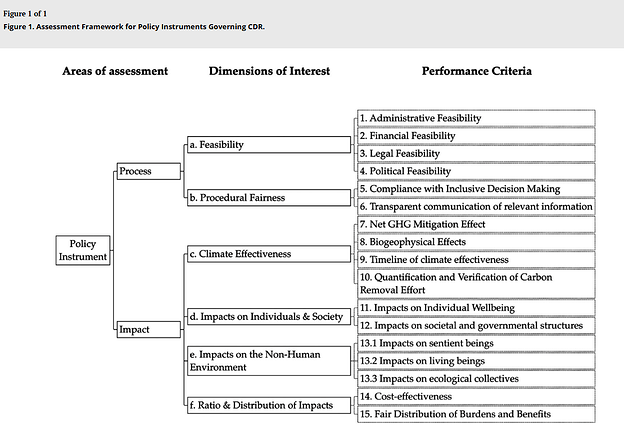In a recently published article entitled ‘How to Govern Carbon Dioxide Removal: An Assessment Framework for Policy Instruments’, Antonia Holland-Cunz and Christian Baatz from Kiel University have presented a detailed roadmap that seeks to assess the implementability and merit of a number of policy tools regulating CDR such as laws, taxes, voluntary undertakings, information tools and state aid. The roadmap encompassess approximately 15 criteria and can be applied by policy-makers, lawmakers, governmental officials and the members of the civil society that endeavour to shape CDR governance. Besides feasibility criteria, it includes indicators that can be used to engage in value-based evaluation. In addition, it uncovers the links between and the conflicting and complementary aspects of the indicators that are used to carry out an assessment and set policy goals.
Key takeaways from the article:
- Policymakers and stakeholders that aim at impacting policymaking can utilize this framework to set out CDR governance schemes and evaluate the extent to which a policy satisfies the performance criteria introduced by the framework.
- The framework endows the processes that are used to introduce CDR policies with transparency and ensures that decisions are well-reasoned.
- This framework can be instrumental for enhancing CDR policies or ensuring that they address all aspects of CDR.
- The use of this framework enables the consideration of novel criteria that are not traditionally considered during the decision-making processes that are geared towards introducing CDR policies.
Read the full paper here: https://www.tandfonline.com/doi/full/10.1080/14693062.2025.2459315#abstract
.
